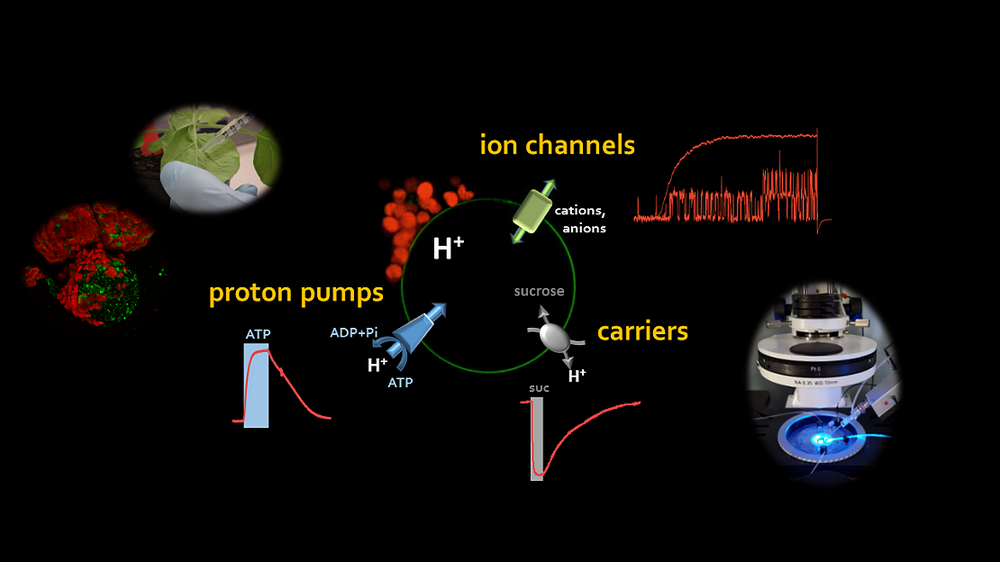Projects
Projects
The growth and vitality of plants are closely connected to water status, nutrient supply, light and CO2 conditions. In leaves the stomatal pores between two guard cells are closed under water deficiency or darkness to minimize water loss while stomata are open under light or insufficient CO2 supply to allow uptake of atmospheric CO2 for plant growth. Thus, water loss and CO2 supply are balanced via the stomatal aperture which is adjusted by turgor-driven changes in guard cell volume. The latter process is regulated by membrane proteins (pumps, ion channels) mediating the dynamic transport of ions across the plasma and vacuolar membrane. The activity of the involved transporters is controlled in a concerted manner. For comprehension of stomatal movement and their role in plant growth control, gain of knowledge about the nature of the engaged transporters, their function/regulation/coordination and integration in a complex signaling network of guard cells is essential.
Coordination of ion fluxes within the stomatal complex of grasses
In gramineae, the pore-forming guard cells and the neighboring subsidiary cells form one functional unit. Thereby, stomatal movement is accompanied by a directed ion transport between guard cells and subsidiary cells. Since these cell types are not connected via plasmodesmata, ions need to be transported in opposite directions across the plasma membrane of guard cells and subsidiary cells. As a result, the ion channel activity has to be differentially regulated in both cell types. In our studies on economically important crops such as maize or barley, we address the question concerning mechanisms which are established in subsidiary cells and guard cells to achieve an anti-parallel ion transport (e.g. in the light: ion release from subsidiary cells and ion uptake into guard cells). These studies aim to increase the understanding of how crops adapt plant growth to drought stress via a tight regulation of stomatal movement.
Regulation of vacuolar ion channels
The vacuole represents the largest compartment within a differentiated plant cell and carries out multiple cellular functions e.g. accumulation of storage substances and nutrients, ion homöostasis, adaptation of cell turgor. In order to decrease guard cell turgor and in turn stomatal pore diameter under limited water supply, ions are released from the guard cell vacuoles via the cytosol into the extracellular space. Thus, ions have to pass both the vacuolar membrane and the plasma membrane. Regulation and coordination of ion channel activities within the two membranes is as yet little understood. Therefore, our present studies address the role of the drought stress signaling hormone abscisic acid (ABA) on regulation of vacuolar ion channel functions. This project is carried out in close cooperation with PD Dr. Rob Roelfsema.
Methods

Electrophysiological and spektroscopic methods (Patch-Clamp-, Two-Electrode Voltage-Clamp technique, Ca/pH-fluorescence measurements) applied an isolated single cells/compartments or intact tissues eventually in combination with molecular biological techniques.








